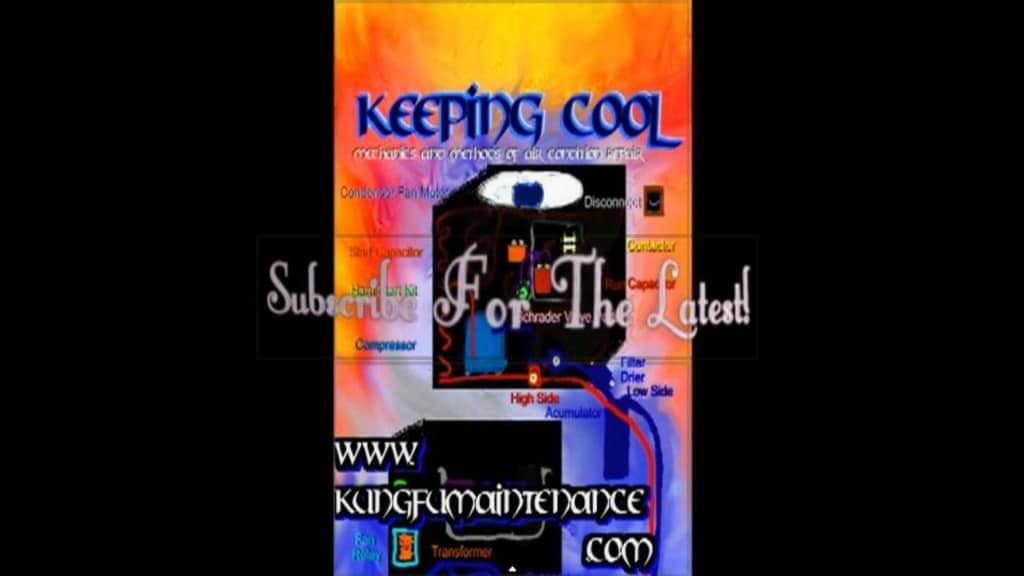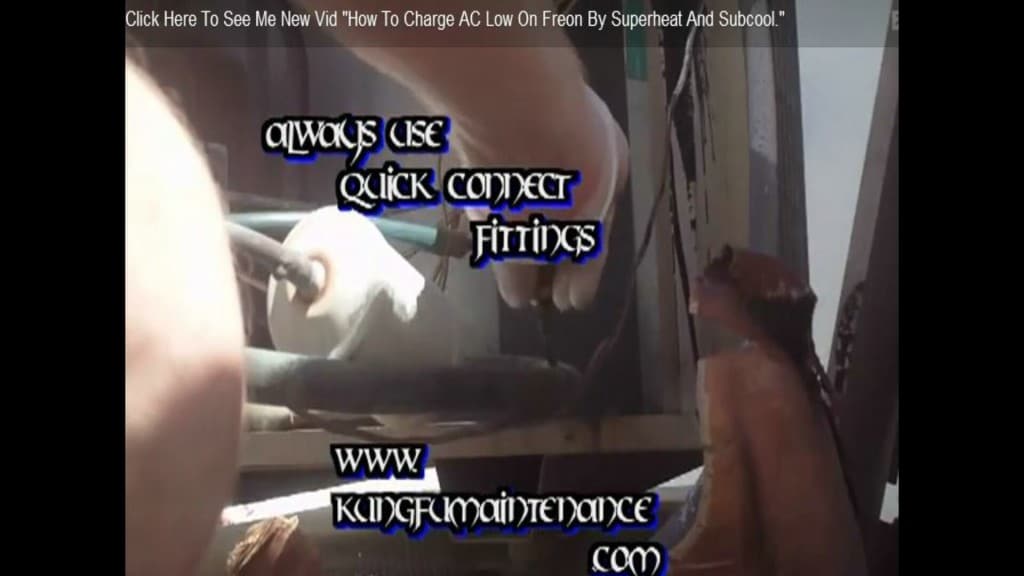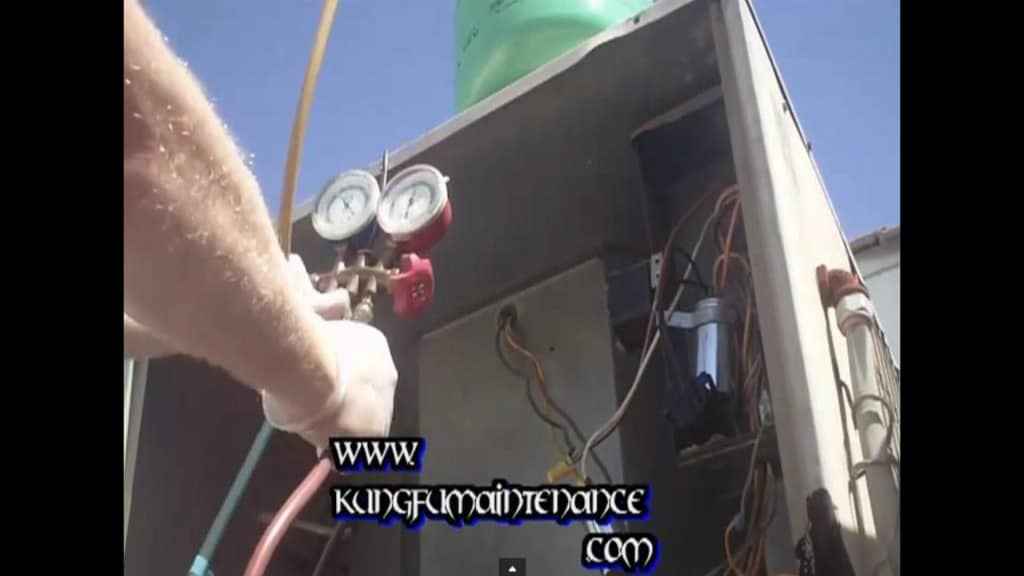All right, today I’m going to be showing you how to charge up a unit that’s low on freon. This particular one, when I feel this suction line, the low side line, it’s not even cool. It’s room temperature here, so we’re low on freon.
Got my standard set of gauges here, and I’ve calibrated my gauges so that they show zero. And I got my refrigerant can of freon on top of the unit. So I’m going to go ahead and get set up here and show you how to hook this up.
What we’re going to do is we’re going to take the blue low side line, make sure both of our valves are off here. Because of the low side lines, I’ll go ahead and hook up my line here. Now, you always want to wear gloves anytime that you’re working with refrigerant to protect yourself from frostbite.
And now looking up at my gauges, I can see it’s only at 20, which is too low. And the first thing we want to do, the thing that’s the worst for an air conditioning unit, is get moisture on the line. And moisture’s obviously contained in the air, so we want to bleed any air out of the line. And the way we do that– this is called a de minimis release, and we’re going to purge any air from the line by cracking the valve right here and let a little bit of the freon out to purge the line. So now there’s no air in the system.
The high side line right here, we’re going to loosen the schrader valve cap, again, listening for any hissing or anything coming out there. And also looking for any oily residue spots that would indicate that we have a leak there. So I’m going to hook up my high side line. Which is kind of tricky on this unit, but that’s OK.
Going to lift it up here. And on our high side, up here at the gauges. We’re going to again release a little bit of refrigerant to purge that air from the line so that we don’t get air in the lines.
Now what we’re looking for on the high side is ambient temperature plus 30 degrees. So if the temperature is 80 outside– which it’s not. Today’s supposed to be 113-115 degrees out here in Palm Springs, but right now I’d say it’s about 105. But look, the moon’s still out, too. But anyway, back to our charging here.
We’re looking for ambient temperature, plus 30. So we want it to be about 135 on the high side. So obviously we’re pretty low here.
So our middle line, we’re going to take and we’re going hook this up to our refrigerant can. I’m going to angle this up so you see it here. Then we’re going to turn thew refrigerant can on open it up. And again, were going to come back down to our gauges. We’re going to crack the port here to release the purged air from the system.
Now we’re ready to charge the unit. If we didn’t purge the air and I opened the line to charge the system, that air is going to go into the system. And when the moisture in the air mixes with the refrigerant, it’s going to turn into acid and it’s going to cause us leaks and all sorts of trouble. So anyway, I purged the line, we’re ready to charge. So I open the line, and you can probably hear the refrigerant going into the system.
Now here I’m feeling the line with my wrists in the suction line side. I can usually tell by feel when it’s starting to get cold. But what we’re looking for is for it to flash, when it just flashes really ice cold, and to charge the unit up. Also, again, we’re looking for ambient plus 30 degrees on the high side, so this can take a little while.
I can show you a few little tricks on charging the unit up. One way to get it to charge faster is if your compressor’s hot to the touch on the top here– which this one is, it’s been running low on freon– you can pour a little cold water on the top of the compressor, being careful not to let it touch the electrical contacts. Or if you had an ice pack, to put an ice pack on the compressor– that’ll speed the refrigerant charge.
Also another way is having shorter hoses helps. Sometimes these hoses, they send you with a six foot hose line and that’s going to cause you to take longer to charge the unit. I like these little short ones. These are three feet– perfect for me.
But obviously, there are some situations where you need the longer hoses. And some people might disagree with me, but anyway, this is how I like it. Makes it nice and easy for me.
It’s pretty hot out here. I’m going to drink a little water myself. A little water for me, a little water for the compressor here to speed things up. You could see it just sizzling off– that’s how hot this compressor is. It’s just been running low on freon.
So we’re only at 110 on the high side, this is going to take a while. On the low side, looking here at the dials, you’ve got different color dials. The inside one is purple for R502. And this green ring is what we’re looking for to match the can of our refrigerant, which is R22.


